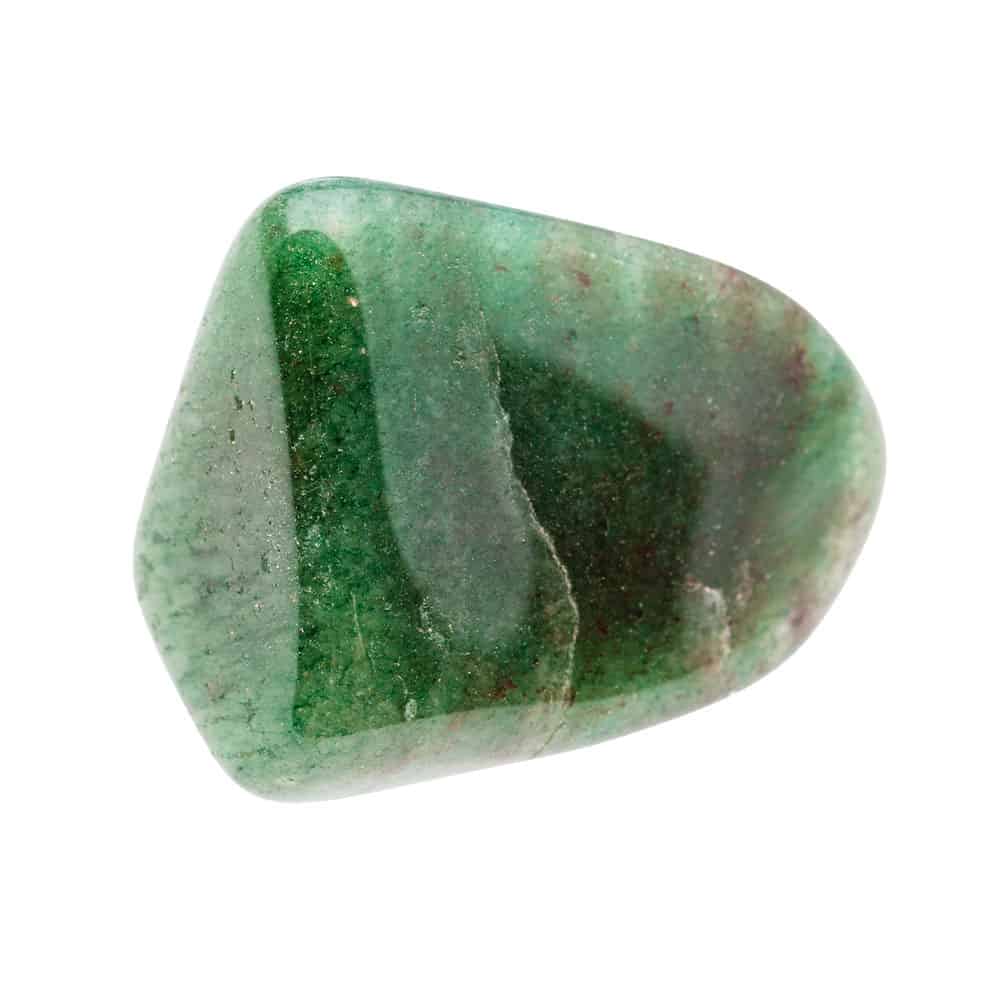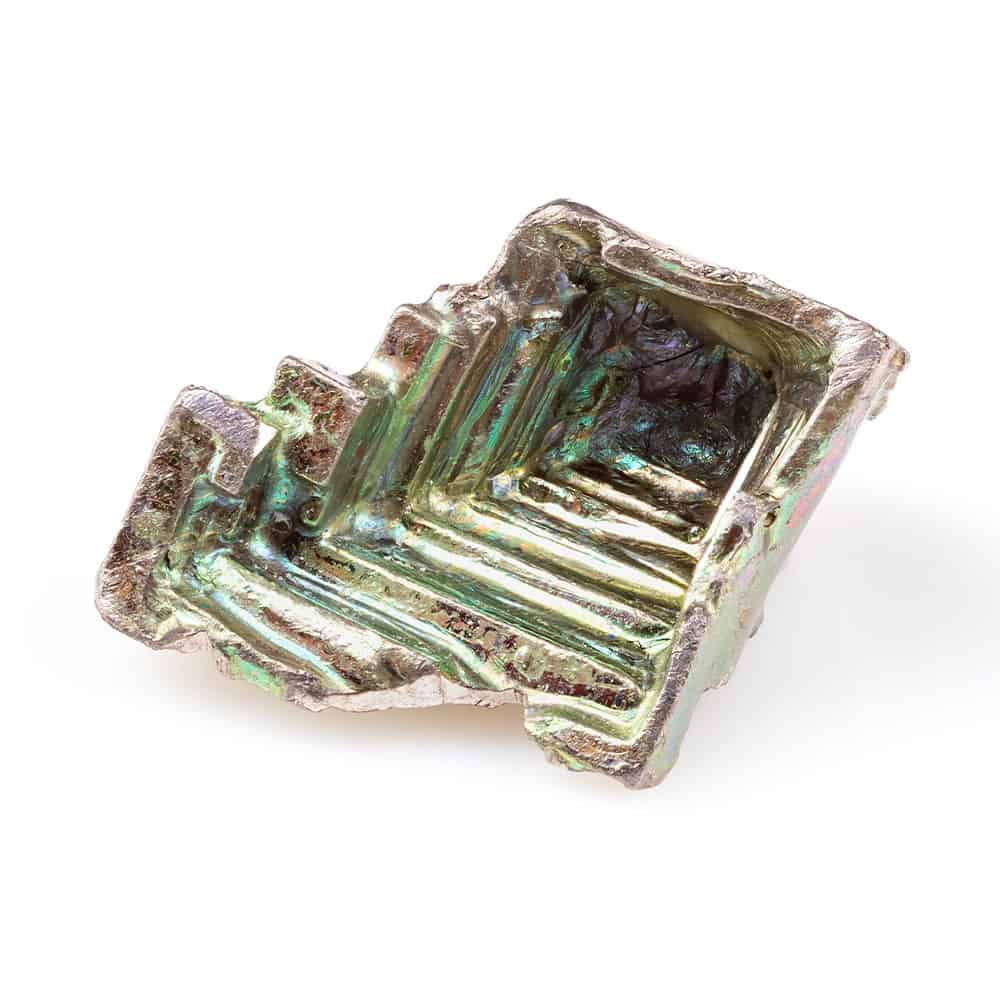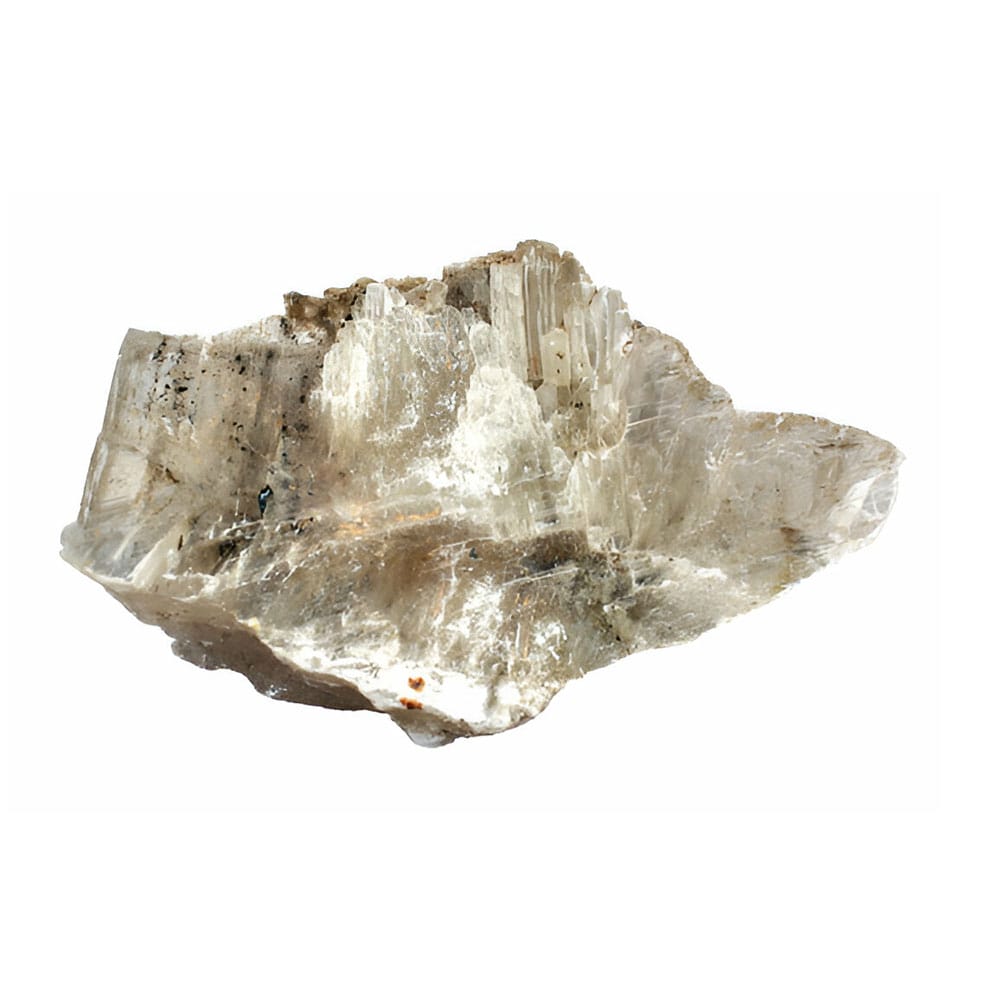15% off your first order
Sign up for our newsletter and save on your first order. Act fast; it won't last!
Will be used in accordance with our Privacy Policy

Sign up for our newsletter and save on your first order. Act fast; it won't last!
Will be used in accordance with our Privacy Policy
Iridescent gemstones are a captivating category of minerals and crystals that exhibit a unique optical phenomenon. The term “iridescence” refers to the stunning play of colours visible on the surface of these gems as light interacts with their internal structure. This effect causes a rainbow-like appearance, where colours shift and change when viewed from different angles. Iridescent gemstones mesmerise collectors, crystal enthusiasts, and jewellery designers with their otherworldly beauty and dynamic visual effects.
Iridescence is an optical phenomenon where a surface gradually changes colour as the angle of view or the angle of illumination changes. This effect occurs due to the interference of light waves reflecting off multiple layers within a material. The light is scattered and refracted, creating a spectrum of colours that shimmer and shift. Iridescence can be found in natural and synthetic materials, including mineral deposits, seashells, butterfly wings, and certain fabrics.
The formation of iridescence in gemstones is a complex interplay of light and structure at a microscopic level. This phenomenon arises due to the interference of light waves. Light enters the gemstone and encounters multiple thin layers within the mineral. These layers can be varying planes of mineral composition or minute inclusions and structural imperfections. As the light waves penetrate these thin layers, they are reflected, refracted, and scattered in various directions.
The variation in thickness of these layers causes different wavelengths of light to interfere constructively and destructively. Constructive interference amplifies specific wavelengths, producing vibrant colours, while destructive interference can cancel out others. The result is a dynamic spectrum of colours that change with the viewer's angle and the direction of the light source.
Additionally, elements such as titanium dioxide or iron oxides can further enhance the iridescence by introducing more complex patterns of light interaction.
Iridescence can manifest in various forms, each influenced by specific structural and compositional attributes of the material. The main types of iridescence include:
Each type of iridescence offers a unique aesthetic experience, showcasing the intricate interplay between light and material structure and contributing to the captivating charm of iridescent objects in nature and art.
Iridescent gemstones are celebrated for their captivating beauty and potent healing properties spanning spiritual, emotional, and mental realms. These gemstones can be powerful tools in various healing practices, enhancing overall well-being.
Iridescent gemstones, such as Opals and Labradorite, are revered for their ability to amplify spiritual growth and awareness. They are believed to cleanse and balance the aura, protecting it from negative energies. Rainbow Obsidian, for instance, is known to be a grounding stone that shields against psychic attacks and supports deep soul healing. These gemstones resonate with various chakras, facilitating the free flow of energy and promoting spiritual enlightenment. For example, Opal is often associated with the Crown Chakra, which helps connect with higher realms and enhances intuitive abilities.
On an emotional level, iridescent gemstones can foster inner peace, stability, and a sense of joy. The shifting colours within these stones can help to release deep-seated emotional traumas and encourage a positive outlook on life. With its vibrant hues, Chalcopyrite is particularly effective in lifting depressive states and promoting happiness. The dynamic energy of these stones induces a state of balance and harmony, helping individuals navigate emotional ups and downs more effectively. They can be used during meditation to achieve a calm, serene mind, releasing emotional blockages.
Mentally, iridescent gemstones can enhance clarity, focus, and insight. The reflective nature of these stones, such as that seen in Labradorite, assists in opening the mind to new ideas and perspectives, fostering intellectual growth and creativity. They are excellent aids for decision-making processes, helping to clear mental clutter and sharpen concentration. The iridescent properties are thought to stimulate the imagination and inspire innovative thinking, making them valuable companions for creative professionals and students alike.
Abalone shell, known for its vivid, peacock-like colours, exhibits a beautiful form of luminosity due to its inner layer, composed of nacre. The fine, layered structure of the nacre causes diffraction and interference of light waves, which generate a rainbow of colours that change with the angle of observation. The resulting palette, often including deep blues, greens, and purples, enhances the allure of abalone shell, commonly used in jewellery and decorative arts for its striking appearance.

Ammolite, an opal-like organic gemstone, is celebrated for its remarkable iridescence and vivid colour spectrum. Derived from the fossilised shells of ancient Ammonites, Ammolite showcases a dazzling array of colours, including reds, greens, yellows, and blues. The iridescent effect in Ammolite results from the microscopic layers of aragonite, a type of calcium carbonate, that compose its structure. These layers uniquely interfere with light, splitting it into vibrant hues that appear to shift and change depending on the angle of observation.

Aventurine is a type of quartz known for its glistening effect called aventurescence. This form of iridescence is produced by mineral inclusions within the stone, such as Fuchsite (a green chromium-rich Mica) or Hematite, which cause a sparkling or glittery phenomenon. These reflective inclusions scatter light within the stone, leading to flashes of green, blue, red, or other iridescent colours. The play of light in aventurine makes it a favoured material for decorative purposes and jewellery, admired for its shimmering grace.

Bismuth, a brittle metal with a crystalline structure, is renowned for its complex and fascinating iridescence. When bismuth is cooled from a molten state, it forms distinct, stair-stepped crystals often tinged with various colours. This captivating appearance is primarily due to a thin oxide layer on the surface, which interferes with light, like how a prism disperses light into its constituent colours. When light hits these oxide layers, it refracts and reflects to create vibrant hues ranging from pinks and purples to blues and greens.

Chalcopyrite, a copper iron sulfide mineral, is often admired for its striking iridescence, earning it the nickname "peacock ore." This mineral exhibits a rainbow-like display of colours, particularly vivid blues, purples, and greens. The iridescence in Chalcopyrite is caused by the oxidation of the surface, which leads to the formation of a thin oxide layer. This layer causes light to be refracted and reflected in various directions, producing a shimmering spectrum of colours. As the oxidation process progresses, the thickness of the oxide layer changes, which can enhance the range and intensity of the colours seen in Chalcopyrite.

Fire Agate displays a captivating play of colour, similar to opal's opalescence, but with a more fiery and reddish hue—layers of limonite and other iron oxide inclusions within the Chalcedony matrix cause this iridescence. As light interacts with these layers, it is scattered and refracted, resulting in flashes of bright, warm colours that seem to dance within the stone. This dynamic interplay of light and colour makes fire agate a distinctive and eye-catching gemstone.

Opal is most well-known for its unique iridescence, often called "opalescence." Opal's internal structure contains arrays of tiny, uniformly spaced silica spheres, often in the range of 150 to 300 nanometres in diameter. When light enters the stone, it bends around these spheres and diffracts, splitting into the colours of the spectrum. The precise arrangement and size of the spheres determine the vividness and range of colours displayed—larger spheres reflect reds and oranges, while smaller spheres reflect blues and greens.

Labradorite is another fascinating mineral known for its iridescent qualities, often called "labradorescence." This phenomenon is characterised by a stunning display of spectral colours, typically in shades of blue, green, and gold, that shimmer as the stone is moved. Unlike opalescence, labradorescence is caused by the lamellar intergrowths within the mineral's structure. These intergrowths consist of alternating layers of different minerals, primarily albite and anorthite, which create thin-film interference.

Moonstone, a member of the feldspar group, is celebrated for its mysterious sheen known as adularescence. This phenomenon occurs due to microscopic orthoclase and albite layers within the mineral. When light falls upon these layers, it is scattered and refracted, creating a soft, floating light effect that appears to move within the stone. The most striking adularescence is often a blue or white sheen atop a transparent or translucent moonstone, creating a serene and ethereal appearance.

Mother of Pearl, or nacre, exhibits a spectacular form of iridescence known as pearlescence. This organic-inorganic composite material, found on the inner shells of some molluscs, contains aragonite platelets organised in a brick-and-mortar structure. Light waves penetrate the layers of platelets, experiencing interference and reflection, resulting in a unique and captivating play of colour. This shimmering effect varies depending on the thickness and arrangement of these aragonite layers, producing soft, gentle hues in shades of white, pink, lavender, and more.

Muscovite, a member of the mica mineral group, exhibits a pearlescent iridescence that can be pretty captivating. Its shimmering effect is due to its unique monoclinic crystal structure, which consists of thin, platy layers that reflect light in various directions. When light interacts with these layers, it creates a silvery or golden sheen that can appear to shift and change as the angle of observation varies.

Rainbow Obsidian, a naturally occurring volcanic glass, is distinguished by its captivating iridescence and rich play of colours. Formed from rapidly cooling lava, this stunning gemstone displays an array of colourful bands such as greens, purples, and reds. The iridescence in Rainbow Obsidian results from the microscopic inclusions of magnetite or other minerals within the glass. When light interacts with these inclusions, it is diffracted to create a multicoloured sheen that shifts with the angle of the light.

Sunstone, another feldspar mineral, is famed for its glittering aventurescence, commonly called the Schiller effect. Platy inclusions of Hematite, Goethite, or Copper cause this iridescence. These inclusions reflect light in a manner that produces an overall metallic sheen or sparkle, often in golden or reddish tones. The vibrant play of light and colour makes sunstone a captivating and highly sought-after gemstone.

Iridescent gemstones find myriad practical uses that extend beyond their mesmerising beauty. These shimmering stones can be incorporated into daily life, offering aesthetic and functional benefits.
One of the most popular uses of iridescent gemstones is in jewellery and fashion. These gemstones, such as Opal, Labradorite, and Moonstone, are often set in rings, necklaces, earrings, and bracelets. Their unique play of colours adds a captivating touch to any outfit, making them highly sought after in fashion design. When choosing jewellery pieces, consider the stone's colour palette and alignment with your style, allowing the iridescence to complement your attire.
In interior design, iridescent gemstones can create stunning and unique home decor items. For instance, polished slices of Agate or Labradorite can be fashioned into coasters, table tops, or wall art, adding a touch of elegance and charisma to living spaces. Crystal lamps and chandeliers embedded with iridescent stones can cast beautiful light patterns, creating a serene and enchanting ambience.
In Feng Shui and other energy-based practices, iridescent gemstones harmonise and balance the energy within a space. Placing a stone like Angel Aura Quartz in a room can enhance the energy flow and stimulate positive vibrations. These stones can be strategically positioned in various locations, such as near entryways or living rooms, to promote tranquillity and prosperity.
Iridescent gemstones serve as powerful tools for meditation and spiritual practises. Stones like Labradorite and Opal often deepen meditation experiences by enhancing focus and connecting to higher states of consciousness. To utilise these gemstones during meditation, hold them in your hand or place them on a chakra point to facilitate energy flow and spiritual connection.
In healing therapies, iridescent gemstones are employed for their purported ability to cleanse and energise the body and mind. Practitioners might use these stones to address specific ailments or emotional blockages in crystal healing sessions. For example, placing Rainbow Fluorite on the forehead can alleviate stress and improve mental clarity.
Creative individuals often incorporate iridescent gemstones into their art and craft projects. These stones can be embedded into mosaics, resin art, or handmade jewellery, allowing artists to add a touch of natural beauty and uniqueness to their creations. Gemstones like Abalone Shell pieces can add a vibrant and dynamic element to artistic works.
Aside from their aesthetic and spiritual properties, iridescent gemstones have also been the subject of scientific research. Studies have shown that the unique light-reflecting properties of these stones can reveal necessary information about the Earth's geological processes. For example, scientists use opal to study volcanic activity and trace mineral formation.
In recent years, iridescent gemstones have also found a place in architectural applications, bringing a touch of luxury and natural beauty to interior and exterior designs. These stones can be incorporated into various elements, such as countertops, wall inlays, flooring, and facades. Using gemstones like Labradorite and Abalone Shells in architecture enhances the aesthetic appeal of spaces. It introduces a unique interaction with light, creating dynamic visual effects as lighting conditions change throughout the day.
Throughout history, iridescent gemstones have been revered not only for their beauty but also for their mystical and protective properties. Even in contemporary times, many people wear these gemstones, appreciating their visual appeal and age-old traditions and beliefs. Amulets and talismans crafted from stones like Moonstone, Labradorite, and Opal have been worn to harness their energies. In various cultures, they were thought to offer protection, enhance spiritual growth, and bring balance to one's life.
Iridescence is not a colour in itself but rather a phenomenon that occurs when surfaces appear to change colour as the angle of view or illumination changes—this optical effect results from the material’s structure rather than its pigment.
Examples of iridescent objects include soap bubbles, butterfly wings, and gemstones. The shifting colours are often described as a play of light, creating a visual spectacle that is a sum of multiple hues rather than a single colour.
The formation of iridescent gemstones is a complex and fascinating process involving geological and chemical elements. Most iridescent stones, such as Opal, Labradorite, and Moonstone, are formed by gradually depositing silica, minerals, and other elements in layers over long periods. The unique structural arrangements and microscopic inclusions or layers within these stones cause light to scatter, reflecting different wavelengths and resulting in the iridescent effect. Factors such as pressure, temperature, and the presence of specific chemicals play a significant role in this intricate natural process.
Several gemstones are celebrated for their iridescent qualities, each offering a unique blend of beauty and optical intrigue. Some of the most popular iridescent gemstones include:
These stones are favoured for jewellery and their applications in art, architecture, and spiritual practices.
Iridescence, derived from the Latin word ‘iris’, meaning rainbow, refers to a phenomenon where surfaces appear to change colour as the angle of view or lighting changes. The interference of light waves causes this optical effect to be reflected off the microscopically thin, multi-layered structures within the material. These structures can split light into constituent colours, creating stunning displays of shimmering hues.
While iridescence and rainbows exhibit a stunning array of colours, they are fundamentally different phenomena. A rainbow is a meteorological event where light is refracted, dispersed, and reflected within water droplets, resulting in a spectrum of light appearing in the sky. In contrast, iridescence, as discussed, is a phenomenon where light waves interfere due to thin-film structures, creating dynamic and shifting colours.
The colours of a rainbow are arranged in a fixed sequence. In contrast, the colours seen in iridescence can change dramatically depending on the angle of the light and the observer’s position.
Iridescence is caused by the physical interaction of light waves with microstructures on a surface. This interaction, known as thin-film interference, occurs when light waves reflect off the different layers of a material. As these waves overlap, they can either amplify or cancel each other out, depending on their wavelengths and the layers’ thickness. This constructive and destructive interference results in the shifting and shimmering colours typical of iridescent objects.
Understanding these different types helps us appreciate the diverse and fascinating ways iridescence can occur in natural and artificial environments.
The colour of an iridescent object is not fixed; it changes depending on the viewing angle and lighting conditions. When light hits an iridescent surface, it reflects multiple times within the thin layers of the material, causing the interference patterns that give rise to the changing spectrum of colours. In essence, iridescence does not correspond to a single colour but rather a continuous play of hues that shift as the observer moves or as the light source changes.
Iridescence can manifest in various forms, depending on the underlying physical and biological structures. Some common types of iridescence include:
Iridescent gemstones captivate with their mesmerising play of colours, making them highly sought after by gemstone enthusiasts, crystal collectors, and jewellery designers. Understanding the mineralogy behind iridescence, identifying and evaluating these gems, and caring for them properly ensures their enduring beauty and value. Additionally, iridescent gemstones hold significant metaphysical meanings, enhancing their allure in spiritual and cultural contexts.
The Mineralogist is the collective voice of The Mineralogie Company's in-house team. With knowledge spanning geology, fashion, interior design, and wellness, The Mineralogist shares the beauty and utility of minerals in everyday life, keeping readers informed and inspired. View all posts by The Mineralogist
Be the first to know about new arrivals, sales, exclusive content, events and more! Sign up for our newsletter and save 15% off your first order.
By entering your email address, you agree to receive Mineralogie offers, promotions, and other commercial messages. You can read our Privacy Policy here and you may unsubscribe at any time.
No account yet?
Create an AccountSign up for our newsletter and save on your first order. Act fast; it won't last!
Will be used in accordance with our Privacy Policy